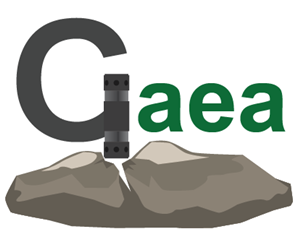Drilling requirements for drilling tools in blasting hole drilling operations
New technology: O2 rock demolition system
Link:
Related products Link:
Drilling is generally described by four characteristics: straightness, depth, straightness and stability.
1. hole diameter
The diameter of the drilled hole depends on the purpose for which the hole is used. In blast hole drilling operations, there are many factors that influence hole selection. For example: the size of the rock particles required after rock breaking; the type of blasting selected; the "quality" requirements of the blasted rock particles (the ratio of particle surface smoothness and fragmentation); the surface area allowed during the blasting operation Vibration level, etc. In larger quarries or large open pit mines, the use of large aperture blasting operations often reduces the drilling and blasting cost per ton of rock. In underground rock drilling operations, the mining equipment is limited by the underground space. In the drilling operation of water well holes, the size of the rock hole depends on the diameter of the pipe or the diameter of the supporting equipment required by the pump. In terms of rock support holes, the diameter of different bolts is the determining factor.
2. hole depth
The depth of the hole is affected by the rock drilling equipment, and only short drills can be selected in a limited space. Short bits in the form of threaded connections are necessary for rock drilling in limited spaces. In blasting rock drilling operations (horizontal or vertical), the drilled hole is slightly deeper than the theoretical depth or terrace height. Under some rock drilling conditions, the depth of the hole is required to be deep (50-70 meters or more), generally using the down-the-hole rock drilling method instead of the top hammer impact rock drilling method, the energy transfer and The powder discharge effect is more efficient under the condition of deep hole.
3. straightness of the hole
Hole straightness is a highly variable factor with rock type and natural conditions, selected mining method and selected mining equipment. In horizontal and inclined rock drilling, the weight of the drill also affects the offset of the hole. When drilling deep blasting holes, the drilled rock holes must be as straight as possible so that the charge can accurately obtain the desired blasting effect.
In some types of rock drilling operations, deep rock holes are often drilled, and the straightness of the rock holes is extremely required, such as pipe holes or cable holes. Even the wellbore requirements are very strict in order for the water pipes and pumps to be installed smoothly.
The use of different types of pilot equipment, such as pilot bits, pilot tubes and pilot rods, will improve hole straightness. In addition to the deviation of the rock hole itself, the direction of the drill hole is also affected by factors such as the degree of adjustment of the advancing beam and the accuracy of the opening. So considerable precision is required in this regard. Studies have shown that more than 50% of rock hole excursions are due to unreasonable advancement beam adjustments and poor openings.
4. Pore Stability
Another requirement for the drilled hole is to remain stable until it has been charged or used for other purposes. Under certain conditions, such as when drilling loose material or soft rock areas where there is a tendency to break out and plug the rock hole, it is very important to use a drill pipe or hose to run down the drilled rock hole.





